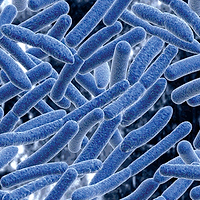Rapid, Biosensor-Based Diagnostic for Listeria in Food in Development

Credit: Bokskapet via Pixabay
Researchers at the University of Georgia (UGA) College of Engineering are developing a biosensor-based rapid diagnostic test for Listeria monocytogenes in food. The new method was recently introduced through a study that was published in Journal of the Electrochemical Society.
The rapid diagnostic method is based on electrochemical biosensors, which scientists have been recently exploring for molecular detection applications in food safety due to their ease of use, high specificity, sensitivity, and low cost. For instance, a research team led by Michigan State University has also been developing a similar rapid biosensor test for Salmonella and Campylobacter.
The method employs bacteriophages—viruses that exclusively infect and replicate certain bacteria—as bioreceptors to identify L. monocytogenes using an electrochemical sensor. The bacteriophages’ specificity enables researchers to detect L. monocytogenes with little interference from other biological agents. Once the bacteriophages attack its target pathogen, they can translate its biochemical information into an electrical signal that alerts users to microbial contamination.
The UGA researchers believe their method is “as good, if not better than” competing methods in terms of their limits of detection, and envision the technology being used as part of a food production line. The developing technology offers a distinct advantage over traditional, time-consuming molecular testing conducted in diagnostic laboratories, which requires industry to send samples taken at specific control points during manufacturing and distribution for testing—a process that can take anywhere from three days to two weeks.
At present, the UGA researchers have tested their system only in a laboratory setting; however, they are planning to apply the technology to contaminated food samples in the near future. If successful, the researchers could further optimize the sensors for early and rapid diagnosis in the food industry.
Looking for a reprint of this article?
From high-res PDFs to custom plaques, order your copy today!






